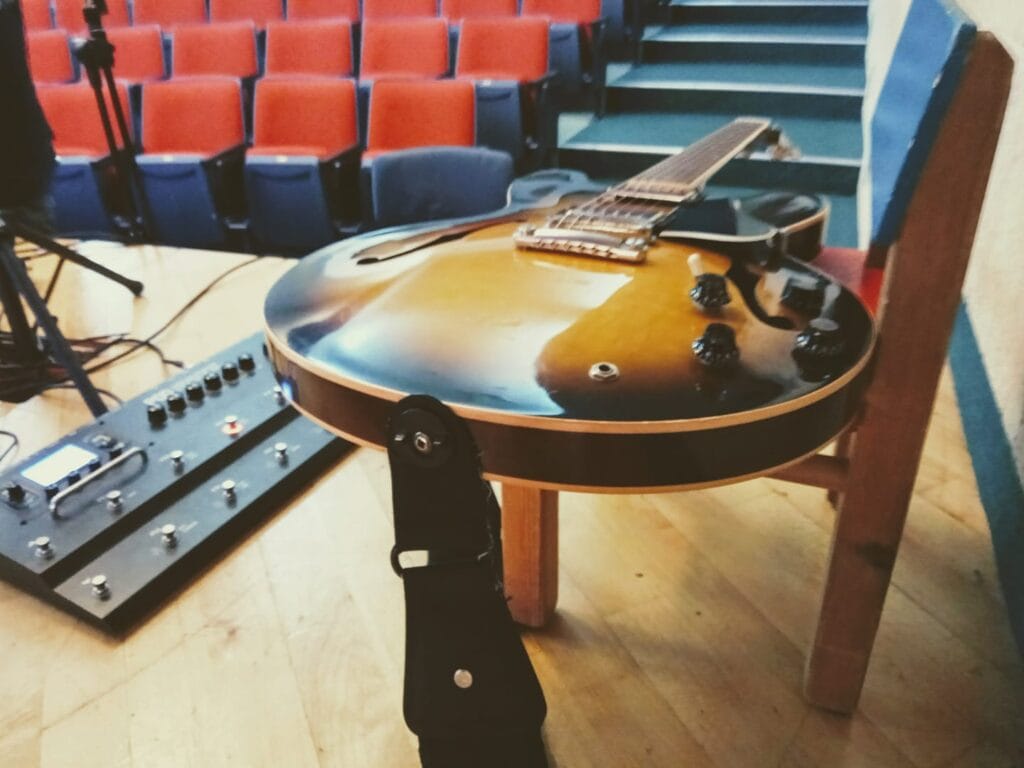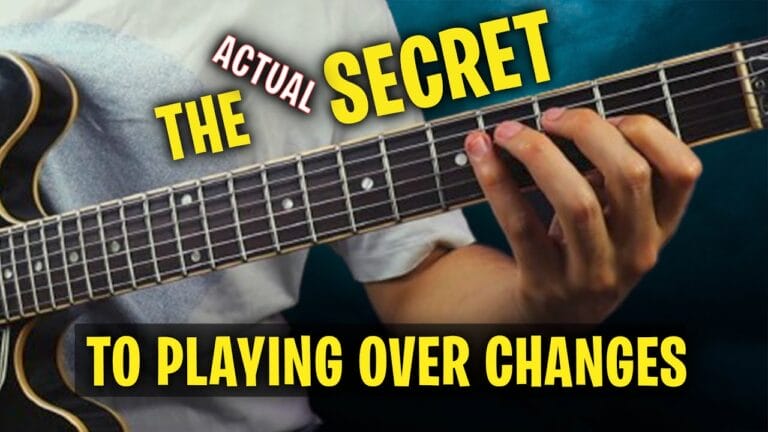From Simple Triads To Amazing Solos – How To Use Triads in Guitar Solos
How To Use Triads in Guitar Solos
The art of crafting guitar solos extends beyond just copying a bunch of licks and arranging them in a certain way. Due to the melodic and sing able nature of most of the greatest solos, they are quite easy to remember.
In this video lesson, we are learning to use triad shapes to start playing stronger melodic solos based on triad patterns.
It is generally accepted that melodies in general, and solos in particular, include chord tones and non-chord tones.
With the progression of the song, many of the notes that were once chord tones could now become non-chord tones or vice versa as things progress.
I am sure you have noticed that sometimes a note sounds right at one point, but four beats later it sounds odd.

5 Great Ideas for Using triads In Your Solos
In order to play a better, more memorable solo, you need to know how to hit chord tones correctly and make them feel and sound like musical phrases.
The good news is that chord shapes can help us find chord tones quite easily.
Discover how to use triads in guitar solos with 5 great ideas to open up your creativity and imagination (watch the video for a full explanation):
Triads In One Position: Play in only one position instead of going all over the neck trying to find stuff.
Chromatic Approaches: Add chromatic approaches between the notes of the triads and also leading from one triad to another.
String Skipping: skip strings in order to get a more Legato sound.
Melodic Extensions: Add complementing notes from the scale to the notes of the arpeggio.
Enclosures: Add a “cage” like phrase to the notes of the arpeggio.
Please make sure you watch the video for the full explanation on how to use triads in guitar solos and now it’s practice time 🙂



















